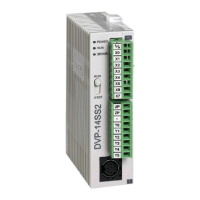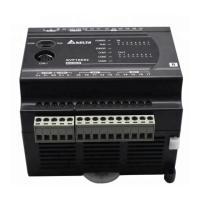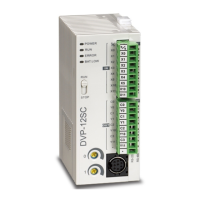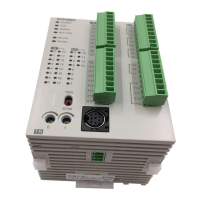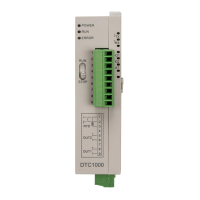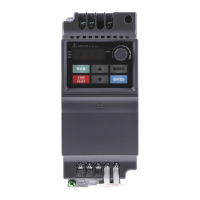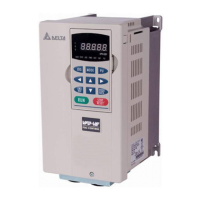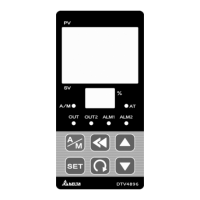Chapter 8 Logic Instructions
MN ≤ In ≤MX
The instruction allows input parameters MN, In and MX to connect the variables of different data
types. When MN, In and MX are the variables of different data types, the calculation is performed
with the data type which can contain the range of the values of MN, In and MX. For example, if the
data type of MN is INT and the data types of In and MX are DINT, the data type of Out is DINT.
The instruction allows the input parameters and the output parameter to connect the variables of
different data types. But the length of the data type of the output variable must contain the length of
the variables that the input parameters In0 ~ InN connect. Otherwise, an error will occur during the
compiling of the software.
Precautions for Correct Use
The input variables are not allowed to omit. An error will occur during the compiling of the software if
the input variables are omitted. But the output variable is allowed to omit.
Programming Example
The data types of LIMIT_MN, LIMIT_In and LIMIT_MX are UINT, UINT and DINT and the data type
of Out1 is DINT. When LIMIT_EN is TRUE, the value of Out1 is 50 if the values of LIMIT_MN,
LIMIT_In and LIMIT_MX are 1, 50 and 100 as shown in the following table Variable 1. If the values
of LIMIT_MN, LIMIT_In and LIMIT_MX are 2, 200 and 100, the value of Out1 is 100 as shown in the
following table Variable 2. If the values of LIMIT_MN, LIMIT_In and LIMIT_MX are 50, 10 and 100,
the value of Out1 is 50 as shown in the following table Variable 3.
Variable 1
Variable name Data type Current value
Variable 2
LIMIT_MX
DINT
100
Variable 3
Variable name Data type Current value
8-141

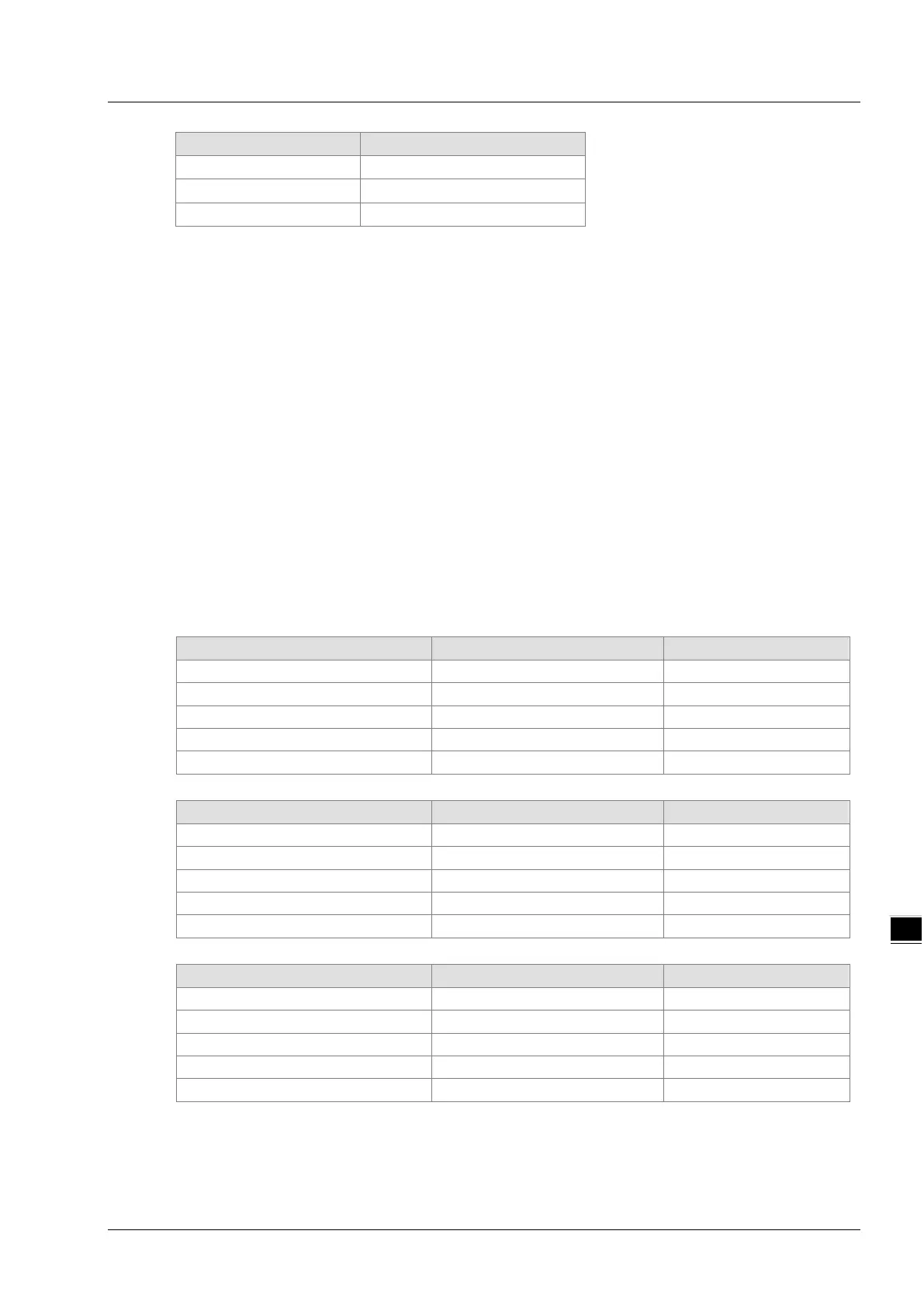